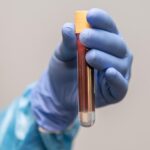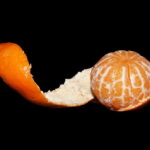What is Alzheimer’s disease and what can it do?
Alzheimer’s disease(AD) is a neurodegenerative disease that causes memory loss, cognitive functions and muscle atrophy among other things. AD is caused by abnormal accumulation of amyloid precursor proteins that forming plaques which interfere with normal brain function. The loss of muscle mass from AD could be from pathological processes between the brain and skeletal muscle.
But how can we control this ? Researchers hypothesized at incorporating resistance training could restore muscle atrophy among other things caused by AD such as cognitive function and oxidative stress. A variety of metrics were used to determine how muscle atrophy was effected by resistance training in healthy rats and rats with AD, such as cross-sectional area(CSA), myonuclear number, myosin heavy chain (MyHC), muscle mass, satellite cell content i.e. number of Pax7+.
Muscle Atrophy
To compare muscle atrophy among different conditions, 48 rats were divided into 4 different groups, healthy rats with no exercise(controlled group, known as H-C) , healthy rats with exercise(H-EX), rats with Alzheimer’s and no exercise(A-C) and rats with Alzheimer’s that exercise(A-EX). The Alzheimer’s was given to the rats by injecting their CA1 region of the dorsal hippocampus with beta-amyloid 1-42 using a stereotaxic device after putting the rats through anesthesia. Pathological slides were created 10 days later to confirm the Alzheimer’s was present.
The exercise group was put through a resistance training program that had them carry weights up a ladder for various cycles and the weight increased weekly, for four weeks. The muscle of focus was the gastrocnemius, or commonly known as the calves.
To analyze the muscle immunofluorescence staining was performed on various microfibers. Immunofluorescence staining involves binding antibodies to specific areas of the muscle that the researches desired to inspect and along with that the antibody would have a second antibody that would have a visual appearance, such as a fluorescent tag, allowing researchers to determine count and identity of muscle parts. After gathering the data, statistical processes were applied to highlight the results.
The long lasting conclusion that could be drawn out was the fact that the loss of muscle was relatively restored in rats with AD when they applied resistance training. The Cross sectional area along muscle fibers were higher in H-C than A-C , but the areas were very similar between H-EX and A-EX. The area of A-EX compared to A-C were significantly higher.
The myonuclear number in muscle fibers followed the same pattern as the CSA where they were higher in H-C than A-C , but were very similar between H-EX and A-EX. The area of A-EX compared to A-C were significantly higher. The satellite cell content of Pax7+ (a protein and a gene that is closely linked to the development and maintenance of skeletal muscle) followed the same patterns.
However when researchers analyzed the distribution of different types of MyHC between controlled and exercise groups the types of chains were very similar and virtually had no difference except for the MyHC IIB type which had significant increases in both exercise groups.
The restoration results can be shown as the metrics of muscle analysis were similar but much greater in both H-EX and A-EX than the others, however H-C had much higher results than A-C, meaning rats that exercised with Alzheimer’s were able to overcome muscle loss and restore it to roughly the same amount as healthy rats who exercise.
Cognitive Function
To test the rats’ ability to overcome cognitive function from AD they were expected to complete four trials of the Morris Water Maze test. This test is done by having a black circular pool with a small platform placed under the water and visual aid for the rats to find it. The time that the rats spend trying to find the platform when swimming in the water(known as latency time), spending time in the right quadrant(there are four) and the number of times they cross the platform can all be used as metrics for cognitive functions.
As expected rats with AD had higher latency times than healthy rats, but each time the EX groups had lower and lower latency times as the resistance training program progressed. The latency times between the A-EX and A-C groups were SIGNIFICANTLY lower, and comparable to the healthy rats.
The same trends could be identified for the other metrics, the time spent in the correct quadrant and the number of crossings was higher for EX groups than C groups, with the AD groups having overall less time, but the gap between A-EX and A-C were still much higher than the same equivalents of the H groups.
It can be said from these results that cognitive function that was impaired from AD could also potentially be restored from résistance training.
Oxidative Stress
When the body is under oxidative stress, there are certain antioxidants that can suppress the side effects of oxidative stress such as Superoxide dismutase(SOD), Catalase(CAT), glutathione peroxidase(GSH). The healthy rats had a much higher level oif antioxidants than the healthy rats with AD but these antioxidants were shown to have a significantly higher level in the EX groups than their respective C groups. These results also suggest that resistance training can also restore antioxidant levels induced by AD.
Conclusion
From the results of the study, results would indicate that by implementing resistance training, muscle atrophy, cognitive function, and antioxidant levels are able to be restored in the presence of AD. The myonuclear number, CSA, satellite cell content are all shown to be higher in the EX groups and despite having AD, rats in A-EX had similar levels to even the H-EX group. However the type of fibers in the MyHC do not vary among control groups. For cognitive function and oxidative stress, the results of the Morris Water Maze and testing of various antioxidant levels, also indicate that A-EX groups restored what was depleted from the A-C groups.
Reference
Rahmati, M., Shariatzadeh Joneydi, M., Koyanagi, A. et al. Resistance training restores skeletal muscle atrophy and satellite cell content in an animal model of Alzheimer’s disease. Sci Rep 13, 2535 (2023). https://doi.org/10.1038/s41598-023-29406-1








